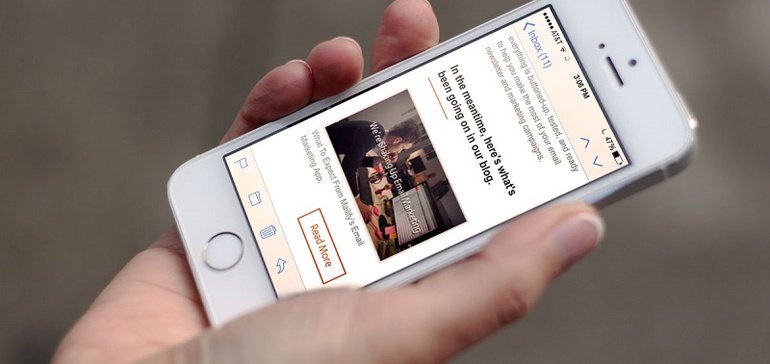Brief:
- Mobile email conversion rates now equal those for desktop computers for the first time as consumers shift their buying habits toward smartphones, a study by Yes Lifecycle Marketing found. The order-per-click rates for mobile and desktop platforms are equal at 3.3%.
- Purchases on smartphones rose 33% in 2017 from a year earlier to make up 46% of all email-driven orders, while tablet and desktop orders saw declines of 14% and 18%, respectively. Desktop continues to drive a higher average order value (AOV) of $96, compared with $58 for mobile platforms, which shows that consumers still prefer desktop functionality for bigger ticket purchases, per Yes Lifecycle.
- The number of marketing emails received by subscribers rose 19% in Q4 2017 from a year earlier, but the number of email opens increased just 8% while clicks increased 3%, the study found. The firm analyzed 9 billion emails sent in Q4 2017 and more than 30 billion for the entire year.
Insight:
Mobile email conversions reaching parity with desktop is an important milestone in mobile commerce, showing that consumers are becoming more comfortable not just reading emails from marketers on their smartphones but also following through and making a purchase.
Yes Lifecycle’s analysis indicates opportunities for marketers to boost average order values on mobile platforms as the smartphone market reaches near-saturation. The key to closing the gap between mobile and desktop AOV will likely be the continual improvement of the mobile shopping experience. As Yes Lifecycle recommends, an important purchase driver for pricier items is having the necessary information easily available and accessible on mobile platforms. Mobile customers frequently abandon shopping carts on their smartphone devices because they think they might be missing something they wouldn’t overlook on a bigger screen. By having access to all the critical product information, consumers can more confidently make purchasing decisions on a mobile device.
Mobile marketers can create emails that “showroom” different products by featuring multiple product images from various angles, highlighting customer ratings and reviews and adding key product specs like size, dimension and other options, for example. Marketers also need to remind customers of the key benefits of shopping with their brand, including free shipping, returns or lifetime warranties that remove any doubt in consumers’ minds about making a quick purchase on-the-go. In other words, email’s ability to drive conversion has much more potential, especially on mobile platforms.
Email adoption on mobile has plateaued in the past two years with mobile opens and clicks making up 53% of all email events, the company found. In Q4, one-fifth of brands’ mailable audiences were made up of subscribers who last opened one of their emails at least a year earlier — 22.5% in inactive subscribers. That means email communications between brands and consumers will continue to occur on a combination of desktop and mobile, which makes offering a consistent experience across different platforms and messages even more critical.
by Robert Williams

